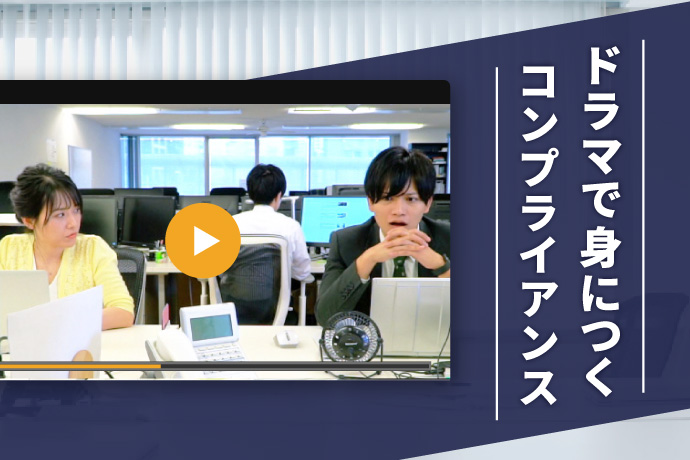What is harassment of shortened working hours? Explaining the risks, specific examples, and ...

Many companies are working to reduce working hours with the goal of improving the working environment. By reducing waste and improving efficiency, organizational productivity can be expected to increase. However, it is important to note that unreasonable shortening of working hours, such as requests for shorter hours that are not appropriate for the actual situation or excessive guidance, can lead to harassment.
This article describes the basics of short-time harassment, the risks it poses to companies, and countermeasures. We hope you will find it useful.
Contents
- 01Basic Knowledge of Short-Time Harassment
- What is short-time harassment?
- The Problem of Short-Time Harassment
- 02Specific Examples of Conduct Constituting Shorter-Time Harassment
- Forcing employees to work take-home overtime
- Supervisor throws work to subordinates.
- Assigning an amount of work that cannot be completed in time
- Strict reprimands for failure to meet quotas and deadlines.
Basic Knowledge of Short-Time Harassment

First, we will explain the characteristics and problems of short-time harassment. Let's confirm the basic knowledge for proper management of working hours.
What is short-time harassment?
Short-time harassment is forcing subordinates or employees to leave work on time or prohibiting them from working overtime without adjusting their workload or reviewing their work style.It is sometimes abbreviated as "jita-hara."
In recent years, long working hours have become a social problem, and as more companies work to shorten working hours, short-time harassment is coming to the surface. As part of measures to reform work styles, improve productivity, and achieve work-life balance, some companies have introduced "no overtime" or "shortened working hours" without taking into account the actual conditions at their companies. In many cases, it seems that some of them are not even aware of the harassment.
There is no law against such short-time harassment per se. However, if a worker is forced to work shorter hours against the backdrop of a superior relationship and causes mental or physical distress, he or she may be subject toRevised Act on Comprehensive Promotion of Labor Policies (Power Harassment Prevention Act)This may conflict with the
Particular attention should be paid to whether unfair instructions are being given by supervisors to subordinates or by senior staff to junior staff.
The Problem of Short-Time Harassment
The quality of work may decrease
In a workplace where only superficial shortening of time is valued, employees will approach their work with speed as the only consideration. If client trust is lost due to poor quality, performance may suffer.
Leads to decreased employee productivity and motivation
Sometimes employees cannot work overtime in the office due to forced shortened hours and take work home with them for the purpose of getting the job done. Working at home may be illegal if overtime is not paid, and can also lead to a loss of motivation. It can also affect the company's overall productivity and turnover.
Easily increases the burden on middle management
Middle managers can easily become overburdened by the fact that they stand between upper management, which dictates shorter hours, and the front line. When unreasonable shortening of work hours causes delays in the progress of subordinates' work, it is not uncommon for supervisors to assume responsibility for the remaining work.
Employee may suffer from physical or mental health problems
Stress and fatigue caused by the deteriorating working environment gradually accumulate damage to the employee's body and mind. Mental and physical ailments may make it difficult to continue working for long periods of time.
Back to ContentsSpecific Examples of Conduct Constituting Shorter-Time Harassment

What specific conduct constitutes short-time harassment? Here are some specific examples of short-time harassment.
Forcing employees to work take-home overtime
This is a case of forcing employees to take work home or work overtime without overtime pay (service overtime) for work that cannot be completed within a certain time.
In these cases, the workload and schedule itself may be the cause. In addition to falling under the category of harassment for shortened hours, failure to pay overtime constitutes a violation of the Labor Standards Law. Be aware that this can cause damage to the company's image and may result in penalties.
Supervisor throws work to subordinates.
This is a case in which a supervisor forces a subordinate to do work that cannot be completed by the deadline. As a result, subordinates are often forced to work take-home overtime or service overtime.
Since supervisors are essentially responsible for adjusting the workload of their subordinates so that it is appropriate, it can be said that the management method is inappropriate.
Assigning an amount of work that cannot be completed in time
Assigning an amount of work that cannot be completed in time is considered short-time harassment. When promoting shortened work hours, the workload must be reviewed and a system must be introduced to adjust work approaches.
Strict reprimands for failure to meet quotas and deadlines.
Excessive coaching, such as harshly reprimanding an employee for failing to meet a short time limit, also constitutes short-time harassment. Reprimanding in public or threatening in an intimidating manner employees who fail to meet quotas or deadlines are examples of harassment.
Back to ContentsWhat Companies Can Do to Combat Short-Time Harassment

Finally, here are some things that companies should do to prevent the occurrence of short-time harassment. Aim for a work environment where employees can maintain their physical and mental health and achieve results.
Conduct harassment training on a regular basis
There are a few companies and supervisors who do not view forced shortening of hours as harassment. By holding training sessions, you can acquire correct knowledge about harassment and detect problems early.
When conducting harassment training in-house, we recommend the use of an e-learning system. This system facilitates the introduction of harassment training because it allows for the creation and distribution of teaching materials, management of trainees, and accumulation and analysis of data, all in one place.
Encourage communication in the workplace
Short-time harassment can also occur due to a lack of communication between supervisor and subordinate. The main reason is that the supervisor is unaware of the subordinate's workload, and only requests for shorter hours are made ahead of time.
If communication between supervisors and subordinates is facilitated, it will be easier to grasp issues in the workplace and promote shorter hours. Regular opportunities for exchanging opinions, such as lunch meetings and team meetings, are also effective measures.
Establish a consultation service
Set up a consultation desk within the company to prepare for the occurrence of short-time harassment. A trusted person should be put in charge of consultation, and the existence of the contact point should be made known within the company. Using an outside consultation service is also an option.
Implement IT tools to improve operational efficiency
Automating some tasks with IT tools may enable you to perform your work in a shorter time than before. For example, many companies are using IT tools such as web conferencing systems, business chat, and attendance management systems.
Promote internal digitization to reduce the burden on employees.
Explain initiatives to customers and seek their understanding.
In reviewing your own workload, you may need to gain the understanding of your customers. In some cases, it may be necessary to change existing support systems or delivery schedules. It is important to explain your future business hours and schedule and gain their understanding.
Back to ContentsE-learning system that can be used to inform the public about short-time harassment
So far, we have explained the basics of short-time harassment and countermeasures. When promoting shorter hours, it is essential to adjust workloads and review work styles. In many cases, however, managers themselves are not aware of the problems associated with enforcing shorter hours.
For in-house elearning courses, learningBOX will help you effectively.
learningBOX is a cloud-based elearning platform
and you can easily build training courses online.
Created content will be delivered to employees and you can track their learning progress.
In addition to the flexible content creation, personalized learning will boost each employee's understanding and knowledge by customizable settings.
There will be something you can do to improve your work environment.
▼You may also like:
Back to Contents Back to Article List


















